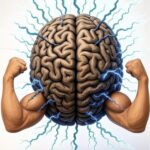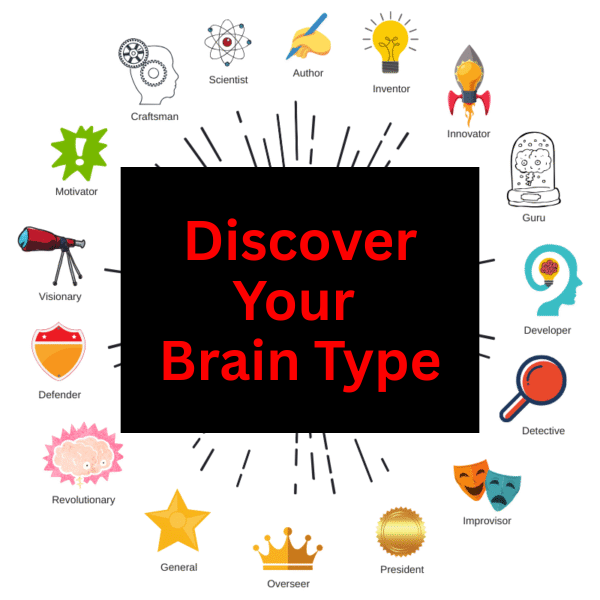We all crave a sharp, resilient mind that stays vibrant through the years. While aging can shrink brain volume, erode memory, and slow neuroplasticity—the brain’s ability to forge new neural connections—the good news is this isn’t inevitable. You have real control over your brain’s trajectory through targeted habits that enhance plasticity, elevate key proteins like BDNF (brain-derived neurotrophic factor), and even “reverse” brain age by years.
Enter the brain age gap: a neuroscience breakthrough comparing your brain’s biological age to your chronological one. A negative gap means your brain functions younger than expected—think better memory, focus, and adaptability. Positive gaps signal faster aging, but research shows you can shrink that gap with deliberate actions. Beyond basics like aerobic exercise, omega-3-rich eating, strong social bonds, and dodging processed foods, alcohol, and toxins (e.g., microplastics), one powerhouse stands out: creative skill-building. It rewires your brain for youthfulness, and the effects scale with effort.
Action 1: Dive into Creative Skill-Building to Rewire Your Brain
A landmark study of over 1,200 people used machine learning on brain activity to calculate age gaps. Experts in creative pursuits showed brains averaging 6 years younger than non-experts. The takeaway? Start a creative hobby today—your brain will adapt via enhanced neural connectivity in motor, attention, and executive networks.
To get started, consider tango dancing, which delivered a whopping –7.1-year brain age reduction: Enroll in weekly classes (aim for 1–2 hours/session) and practice rhythms at home with free online tutorials. Track progress: After 3 months, note improved coordination and mood.
For playing music, expect –5.3 years younger: Choose an instrument (e.g., guitar or piano) and schedule 20–30 minutes daily practice via apps like Yousician. Build to 13+ years of experience for max gains—join a local band for accountability.
Visual art offers –6.2 years: Dedicate 1 hour/week to sketching or painting; use beginner kits from apps like Procreate. Enroll in a 4–6 week online course to hit “expert” thresholds like 4.5 years of structured learning.
These activities boost neuroplasticity by strengthening frontoparietal hubs for movement, timing, mood, and focus. Long-term pros show “global coupling”—seamless brain-wide coordination like a symphony—while beginners gain quick wins in attention and perception. Best part: The type doesn’t matter; any deep, multisensory skill works. And here’s a game-changer: Pairing learning with exercise—like practicing dance steps during a brisk walk or timing musical rhythms while cycling—can outperform exercise alone. This combo supercharges BDNF release and accelerates neural wiring, creating denser, more efficient connections for faster learning and lasting brain resilience.
Action 2: Supercharge BDNF—the Plasticity Powerhouse
BDNF fuels new neural connections and declines with age, linking to smaller brains and fuzzy memory. Low engagement in learning? That might accelerate it. But creative pursuits help: Dancing spikes BDNF mildly, musicians have higher baseline levels, and even “exergaming” (active play) raises it fast.
For bigger boosts, layer in these evidence-backed tactics (listed by order of effect). Aim for consistency—track via a journal or app to see mood and focus improvements.
- Prioritize Intense Exercise (Top BDNF Booster): One HIIT session (e.g., 20–30 minutes of running or cycling at 80–90% max heart rate) spikes BDNF via lactate signaling. X Gym group Xardio class is perfect for this. X Gym strength training works too, due to the heart rate spikes from each exercise done in the session. Action: Add a Norwegian 4×4 workout (4×4-minute intervals at high effort, 3-minute recoveries) or X Gym workout (at the Kirkland gym, online training, or the Xercise app) twice weekly—expect hippocampal growth and sharper recall. And as noted, weave in skill-learning here for amplified effects. You can do this on your own by picking something to learn while you’re exercising, or just come to X Gym because deep learning happens by default, since we are functional training with mindful movements, plus constantly mixing up the exercises, methods, and splinter techniques with every workout.
- Load Up on Omega-3s: 1–2g combined EPA/DHA daily (from fish oil or algae supplements) builds neuronal membranes for plasticity. Effects kick in after 10 weeks. Action: Eat fatty fish 2–3x/week or supplement; pair with meals to avoid fishy burps. Monitor via blood tests if possible.
- Embrace Heat Stress: Saunas (20+ minutes at 176–194°F, 3–4x/week) or hot baths (108°F) trigger hormetic responses, spiking BDNF up to 66%. Action: Start with 10-minute sessions, hydrate well, and alternate with cold showers for recovery—great for mood too.
- Practice Intermittent Fasting or Ketones: Skip meals 16:8 (e.g., eat 12–8pm) or sip exogenous ketones to raise BHB, BDNF’s signaling ally. Action: Ease in with one 14-hour fast/week; use ketone strips to confirm levels. Combine with exercise for synergy.
Your Brain Maintenance Plan: Start Small, Scale Big
Your brain thrives on the same intentional care as your body—yet creativity often gets sidelined. Reframe hobbies as non-negotiable anti-aging rituals. You don’t need pro-level talent; consistent, challenging practice is the magic.
Quick-Start Roadmap:
- Week 1: Pick one creative pursuit (e.g., dancing or an X Gym workout) and one BDNF hack (e.g., HIIT like Xardio). Schedule 2-3 sessions per week.
- Month 1: Track brain age proxies—journal memory tests or use apps like Lumosity.
- Ongoing: Layer in social elements (like group classes or X Gym group training) and review quarterly. Aim for “expert” status in 1–2 years.
The science is clear: These actions don’t just preserve—they rejuvenate. Your brain’s clock ticks slower with every deliberate step, and for many, it can even make them feel like their brain is getting younger! What’s your first move? Pick a skill, lace up, and let neuroplasticity do the rest. Your future self—sharper, more adaptable—will thank you.
References
- Reymore, L., et al. (2025). Creative experiences and brain clocks. Nature Communications. https://pmc.ncbi.nlm.nih.gov/articles/PMC12494922/
- Erickson, K. I., et al. (2010). Brain-derived neurotrophic factor is associated with age-related decline in hippocampal volume. Journal of Neuroscience. https://pubmed.ncbi.nlm.nih.gov/20392958/
- Pardo, A., et al. (2024). The Effect of Two Somatic-Based Practices Dance and Martial Arts on Brain-Derived Neurotrophic Factor Levels and Cognitive Function in Older Adults. Frontiers in Psychology. https://pmc.ncbi.nlm.nih.gov/articles/PMC11550684/
- Di Iorio, A., et al. (2021). Musical practice and BDNF plasma levels as a potential marker of synaptic plasticity: An instrument of rehabilitative processes. Neurological Sciences. https://pmc.ncbi.nlm.nih.gov/articles/PMC8043880/
- Monteiro-Junior, R. S., et al. (2021). Exergame training-induced neuroplasticity and cognitive improvement in older adults: A 6-week randomized controlled trial. Physiology & Behavior. https://www.sciencedirect.com/science/article/abs/pii/S003193842100278X
- Harvey, T., et al. (2020). Lactate and BDNF: Key Mediators of Exercise-Induced Neuroplasticity? Journal of Neuroplasticity. https://pmc.ncbi.nlm.nih.gov/articles/PMC7230639/
- Wu, G., et al. (2023). A systematic review and meta-analysis of the omega-3 fatty acids effects on brain-derived neurotrophic factor. Nutritional Neuroscience. https://pubmed.ncbi.nlm.nih.gov/37589276/
- Laatikainen, L. E., et al. (2021). Heat therapy: Mechanistic underpinnings and applications to cardiovascular health. Journal of Applied Physiology. https://pmc.ncbi.nlm.nih.gov/articles/PMC8285605/









